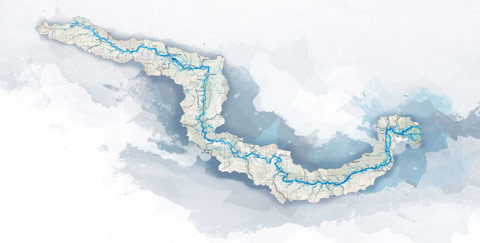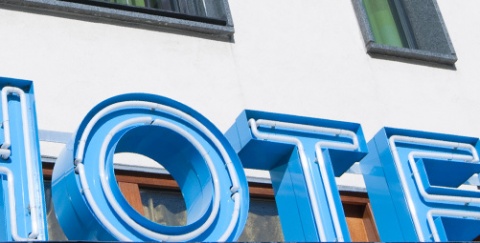
Visegrád, the town of the lively Early Renaissance
Visegrád is a town where history has harmoniously intertwined natural beauties and man-made masterpieces, where the centuries-long cohabitation of natural assets and human architecture has created immortal values.
Situated 43 kms north of Budapest on the right bank of the Danube, Visegrád is a settlement located at the most picturesque point of the Danube Bend, in the centre of the Danube-Ipoly National Park amidst a unique natural environment.
The small town, at the crossroads of the Danubian peoples and cultures, displays a rich diversity of historical monuments. Visegrád, a witness of the vivid Early Renaissance, meanwhile a cradle of the cooperation of the Visegrád Group, is welcoming the visitors with exciting programs which guarantee memorable experiences.
Ancient memories testify the natural beauties and the human presence. Eight watchtowers and two fortifications attest one of the ancient ‘limes’ that had protected the borders of the Roman Empire. The name of the town, which means “upper castle”, was first mentioned in 1009 in a charter of Saint Stephen King as a county town and the chief seat of an archdeaconry, whose remains can be found on Sibrik Hill. In the wake of the Mongol invasion Hungary's largest fortification was constructed, which encompassed the Danube Tower, the Lower and the Upper Castles.
The heyday of the town was reached in the 14th and 15th centuries, when Visegrád became the royal seat of Hungary. Kings Charles I, Louis the Great, Sigismund of Luxemburg and Matthias Corvinus erected one of Europe's most representative royal palaces built in late Gothic style and later decorated with Renaissance elements. At the conference held in 1335 the leaders of the Hungarian, Bohemian and Polish Kingdoms laid down the foundations of European political and economic development. In the same centuries, in addition to being the royal seat, Visegrád also served as a housing place for the Holy Crown.
In 1991 the castle hosted a conference where the heads of states and governments of Hungary, Czechoslovakia and Poland signed the cooperation agreement of the Visegrád Group.
Upper Castle
Built in the 1250s, the Castle was outstanding among the Hungarian castles of the age in size, power and luxury. First serving as a provisory royal residence, in 1335 it hosted the royal meeting of the three kings and also homed the Hungarian coronation jewels. Although the fortress had been rebuilt and fortified between the 13th and 15th centuries, due to the damages caused by the Ottoman Invasion it turned into ruins, and by the 18th century had lost its military importance.
Lower Castle
The castle, built by King Béla IV on the high banks of the Danube, had served both as a watchtower over the royal road between Buda and Esztergom and the naval trade on the river, and as the residence of the royal family and of the Bailiff of Pilis. The Solomon Tower, a large, hexagonal 34-metre high residential fortified tower, perished in the Turkish times. The reconstruction of both castles started in 1872 and was completed in the 1970s.
Roman Fortress and the Bailiff Castle on Sibrik Hill
Royal Palace
King Charles I moved his court to Visegrád in 1323. His successors, King Louis the Great and King Sigismund of Luxemburg converted it into a 123 x 123 metre-surface palace, surrounded by a sumptuous court, fountains, vineyards and orchards, which made it one of the most beautiful royal residences of Europe. During the reign of King Matthias Corvinus the palace had been reconstructed in late Gothic style and decorated with the Italian Renaissance architectural elements, this having been the first presence of the style outside Italy.
Statues of Hungarian kings in Visegrád:
- Charles I, Matthias Corvinus, Béla IV
- Pálffy-Daun Castle
- Görgey-Latinovits Villa
- Reformed Church
- Mary Chapel
- John the Baptist Roman Catholic Church
- King Matthias Museum and History Playground
- Playgrounds on Mogyoró Hill
- International Royal Palace Games of Visegrád
For three decades now, Visegrád – the lively town of the Early Renaissance – hosts Hungary’s largest outdoors historical summer festival, the International Royal Palace Games. The four-day event, visited by more than ten thousand spectators, revives the atmosphere of the royal meeting of 1335, where a high number of European and Hungarian teams participate in the chivalric tournaments and fortress sieges. Amidst the spectacular events Medieval Fair invites the visitors to taste Hungary’s best wines and matchless cuisine.
The Order of Saint George
Natural environs of Visegrád
Visegrád matches perfectly the natural and built assets of the region. While the Pilis mountain range embracing the town offers various activities from hiking, cycling and hunting to summer and winter sports, the Danube is inviting to water sports.
Contact:
Phone: +36 26 397 188
E-mail: info@visitvisegrad.hu
Website: www.visegrad.hu
DANUBE.TRAVEL has no control over the website content generated by users and/or visitors, neither such content represents a statement, opinion, recommendation or rating by DANUBE.TRAVEL. For further information please refer to DANUBE.TRAVEL – General Website Terms and Conditions of Use.
 EN
EN DE
DE











